Search Thermo Fisher Scientific
Invitrogen
CD20 Monoclonal Antibody (L26), Alexa Fluor™ 488, eBioscience™
This Antibody was verified by Relative expression to ensure that the antibody binds to the antigen stated.
FIGURE: 1 / 16
CD20 Antibody (53-0202-82) in IHC (P)
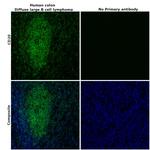
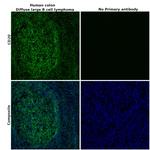

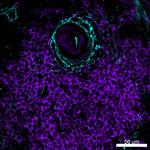
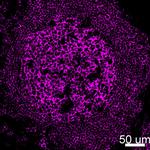
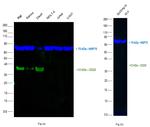
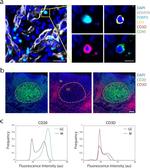
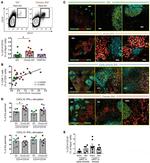
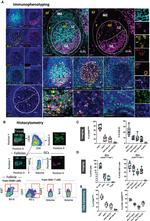
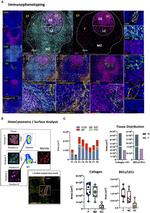
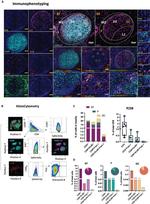
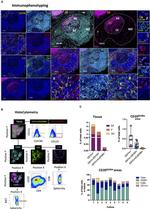
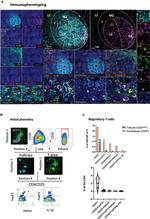
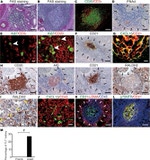

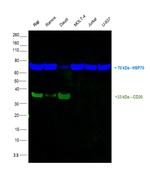
Product Details
53-0202-82
Species Reactivity
Published species
Host/Isotype
Recommended Isotype Control
Class
Type
Clone
Conjugate
Excitation/Emission Max
Form
Concentration
Purification
Storage buffer
Contains
Storage conditions
Shipping conditions
RRID
Product Specific Information
Description: The monoclonal antibody L26 recognizes human CD20, a two transmembrane spanning protein found on precursor and mature B lymphocytes. Expression is lost upon differentiation to plasma cells. The levels of CD20 are critical in evaluating malignant B lymphocytes including Non-Hodgkin's Lymphoma, and Acute B cell, Chronic Lymphocytic and Hairy-Cell Leukemias. CD20 plays a role in B cell differentiation and activation. The structure of the protein shows a small extracellular loop with the carboxy and amino termini in the cytoplasmic compartment. The L26 antibody recognizes an epitope in the cytoplasmic domain and therefore requires permeabilization of the tissue for staining applications. Unlike many anti-CD20 antibodies that recognize the extracellular domain, the epitope recognized by L26 will not be blocked by therapeutic antibodies to CD20, like Rituximab.
Applications Reported: This L26 antibody has been reported for use in immunohistochemical staining of frozen tissue sections, and immunohistochemical staining of formalin-fixed paraffin embedded tissue sections.
Applications Tested: This L26 antibody has been tested by immunohistochemical staining of human FFPE tonsil with low pH antigen retrieval (Product # 00-4955-58) and can be used at less than or equal to 10 µg/mL. It is recommended that the antibody be carefully titrated for optimal performance in the assay of interest.
It has been reported that the L26 antibody when used without antigen retrieval will detect a subpopulationof CD20-positive cells. The L26 antibody can be used with high pH antigen retrieval, although the quality of the staining and cell morphology is not optimal. This product has been optimized for use in immunohistochemistry. We do not recommend its use in flow cytometry. For flow cytometry applications, please refer to clone 2H7, Product # 11-0209-42 .
Excitation: 488 nm; Emission: 519 nm; Laser: Blue Laser.
Filtration: 0.2 µm post-manufacturing filtered.
Target Information
CD20 is a non-glycosylated surface phosphoprotein that has a molecular weight range of 33-37 kDa depending on the degree of phosphorylation. CD20 is expressed on mature and most malignant B cells, in a subpopulation of T lymphocytes and follicular dendritic cells. CD20 expression on B cells is synchronous with the expression of surface IgM and it regulates transmembrane calcium conductance, cell cycle progression and B-cell proliferation. CD20 is also associated with lipid rafts, but the intensity of this association depends on extracellular triggering, employing CD20 conformational change, and/or BCR (B cell antigen receptor) aggregation. After the receptor ligation, BCR and CD20 colocalize and then rapidly dissociate before BCR endocytosis, whereas CD20 remains at the cell surface. CD20 serves as a useful target for antibody-mediated therapeutic depletion of B cells, as it is expressed at high levels on most B-cell malignancies, but does not become internalized or shed from the plasma membrane following monoclonal antibody treatment. Diseases associated with CD20 dysfunction include Ms4a1-related common variable immune deficiency.
For Research Use Only. Not for use in diagnostic procedures. Not for resale without express authorization.
Bioinformatics
Protein Aliases: APY; ATOPY; B-lymphocyte antigen CD20; B-lymphocyte cell-surface antigen B1; B-lymphocyte surface antigen B1; Bp35; CD20; CD20 antigen; CD20 receptor; Fc epsilon receptor I beta chain; Fc Fragment of IgE high affinity I receptor for beta polypeptide; FCER1B; IGEL; IGER; IGHER; LEU16; Leukocyte surface antigen Leu-16; Ly44; Membrane-spanning 4-domains subfamily A member 1; membrane-spanning 4-domains, subfamily A, member 1; MGC3969
Gene Aliases: B1; Bp35; CD20; CVID5; EGK_06167; LEU-16; MS4A1; MS4A2; S7
UniProt ID: (Human) P11836
Entrez Gene ID: (Human) 931, (Rhesus monkey) 696843, (Cynomolgus monkey) 102118491

Performance Guarantee
If an Invitrogen™ antibody doesn't perform as described on our website or datasheet,we'll replace the product at no cost to you, or provide you with a credit for a future purchase.*
Learn more
We're here to help
Get expert recommendations for common problems or connect directly with an on staff expert for technical assistance related to applications, equipment and general product use.
Contact tech support

